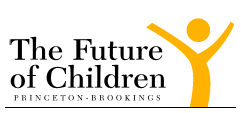 The Future of Children, a collaboration between Princeton University and the Brookings Institution, has released its latest journal Fragile Families (vol 20, no. 2) with an accompanying Executive Summary and related Policy Brief.
The Future of Children, a collaboration between Princeton University and the Brookings Institution, has released its latest journal Fragile Families (vol 20, no. 2) with an accompanying Executive Summary and related Policy Brief.
As described in the Executive Summary, the United States has seen a swift rise in non-marital childbearing over the past fifty years which has given rise to a new family form– fragile families which are defined as couples who are unmarried when their children are born. More than traditional families, fragile families face greater risks effecting a child’s well-being, like those risks related to family stability and of economic security. In this Journal, experts address the trend of increasing fragile families and explore the ramifications of the trend, and provide policy recommendations to both reduce the number of children born into fragile families in the first place and ensure that children born into fragile families receive the support they need to grow into healthy, productive adults.
After an introduction to fragile families, the Journal presents the several articles to address three issues 1) the capabilities of the parents, their relationships with each other and with their children, and how both change over time, 2) how being raised in fragile families affects the well-being of children, and 3) whether the growing pattern of fragile families should be of concern to researchers and policy makers, and if so, what the role of policy should be in solving any problems posed. The articles, available to the public, are:
- Parental Relationships in Fragile Families
- Mothers’ Economic Conditions and Sources of Support in Fragile Families
- Capabilities and Contributions of Unwed Fathers
- Fragile Families and Child Wellbeing
- Race and Ethnicity in Fragile Families
- An Ounce of Prevention: Policy Prescriptions to Reduce the Prevalence of Fragile Families
- Incarceration in Fragile Families
- Unmarried Parents in College
- Marriage and Fatherhood Programs
Look to the Executive Summary if you’d like a glimpse of the key research findings and policy recommendations covered in-depth in the articles.

